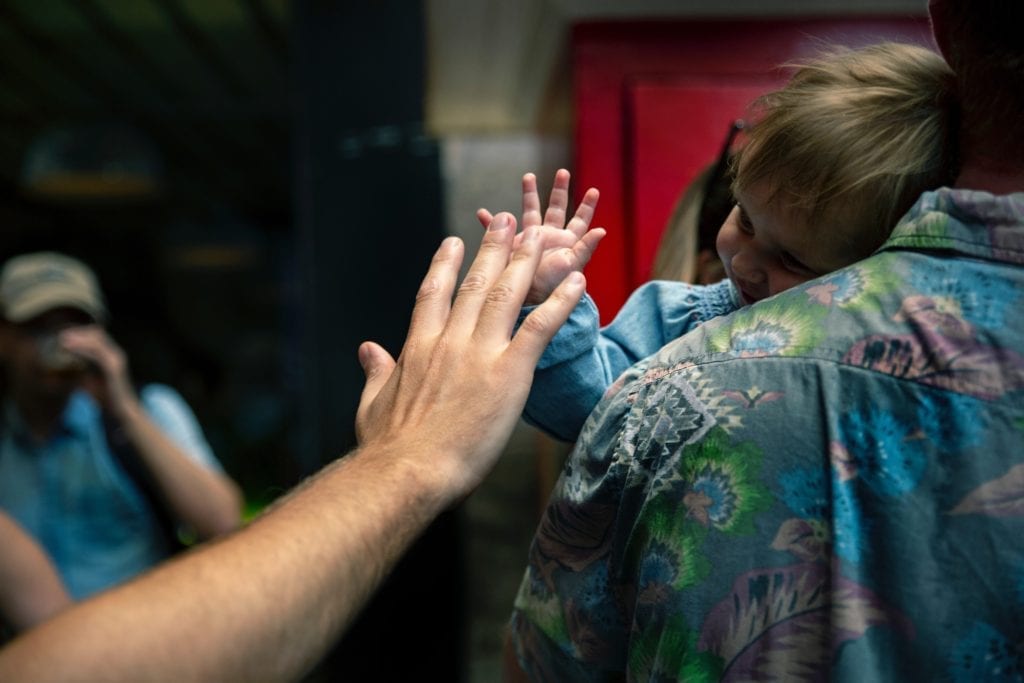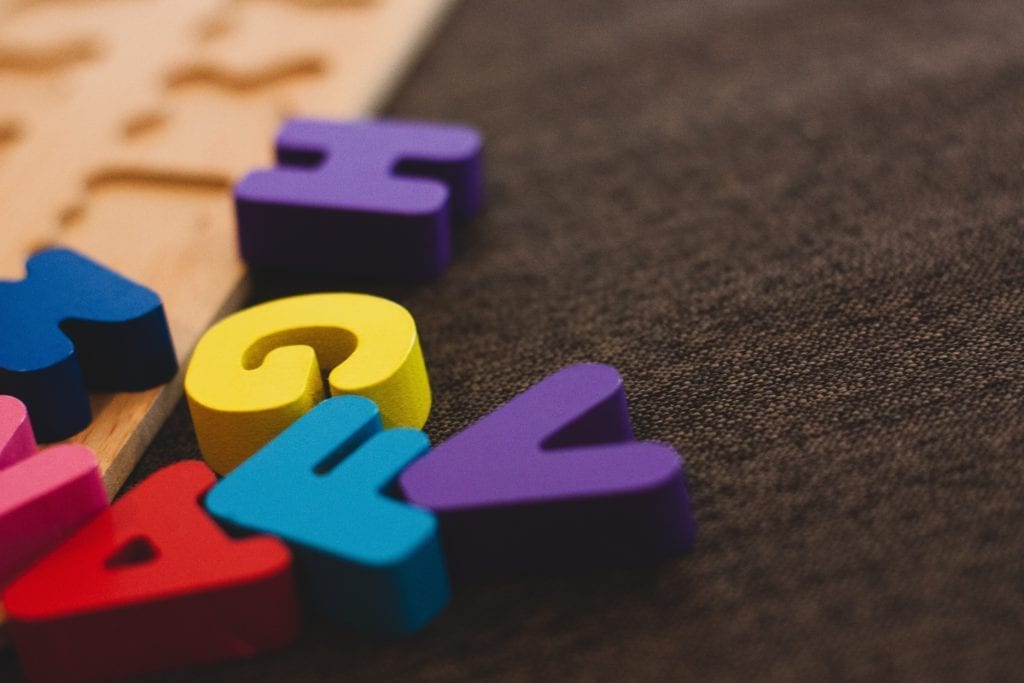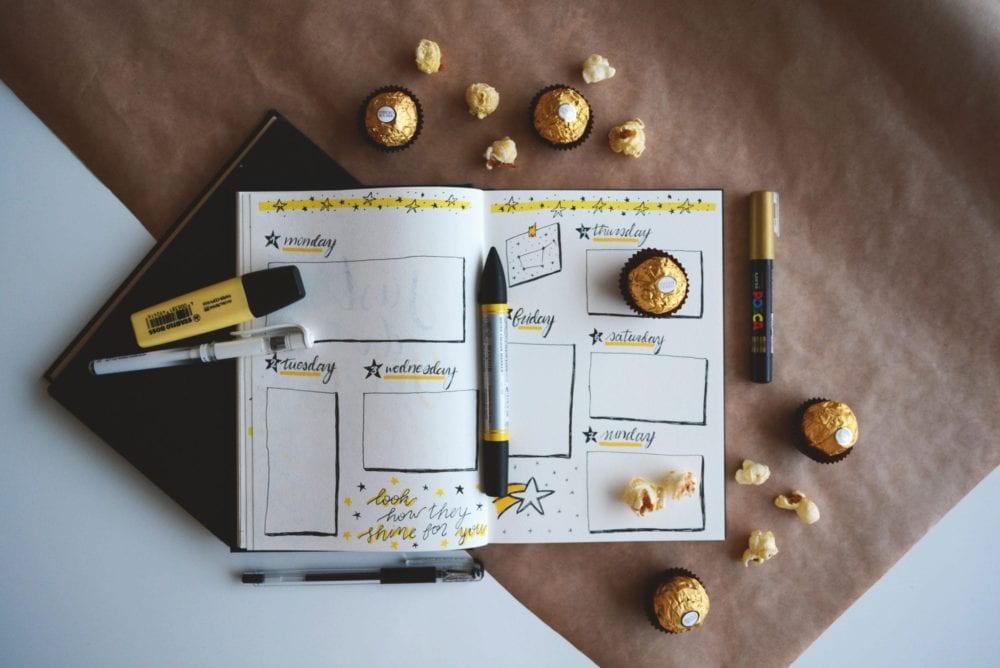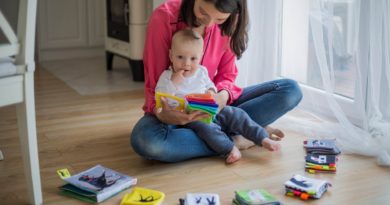How To Help A Child With Behavior Problems At School
How to help a child with behavior problems at school is a very complex issue.
The answer can depend on an array of factors and can change from day to day.
Whether you are a parent or teacher, behavior management or dealing with behaviors appropriately is the key to a child’s success both in and outside of the classroom.
In this article, you will be presented with the most important factors that will help you manage students or children with behavior issues.
In this article, you will see quotes from Teachers from all over the world who have given us their best strategies and advice on how to help a child with behavior problems at school.
Relationships are key to supporting students with behavioral problems. There is always a deeper reason for the behavior. Developing a relationship with the student will aid in finding the root cause and changing the behavior
– Jen Castillo: Aurora, Colorado MS AP
1. Keep Healthy To Maintain Energy

This is by far the most important and overlooked aspect of Teaching and Parenting.
To do it right, it is not easy!
It takes quite a bit of energy and patience.
Without energy, you will never have the patience to fully implement these strategies.
You will have the knowledge but not the follow-through to successfully apply a positive behavior blueprint.
Making a conscious effort to set up patterns and routines that will help you increase your energy will set you on the path for success.
This will not only make you feel better but allow you to focus on what will really benefit your children or students throughout the day.
One of the best ways to stay your healthiest on the go is to take a whole food multi-vitamin.
We don’t always eat the best when we are putting all our energy taking care of our children and students.
NATURELO One Daily Multivitamin for Women and for Men is a great start in winning the energy battle each day.
Click the above link for Amazon pricing and rank
Here are some practical tips to keep the energy flowing and your kids happy.
- Don’t bring problems to bed
- Keep the stress eating to a minimum
- Blow off some steam
- Stay Hydrated
- When in doubt…Coffee
- Ask for help
If you are interested in more information on how to help maintain energy see Harvard Medical School’s 9 Tips To Boost Your Energy — Naturally
2. Build Rapport To Prevent Behaviors

The old saying goes; “An ounce of prevention is worth a pound of cure” is truer today than ever.
Being able to prevent poor behavior by building a connection with children is one of the best strategies available.
“Build positive relationships. Just let them know that you are always there to talk to… give the child space when needed…. smile at them often… sometimes that is all they need….. worked for me! ”
-Sandra Jane: Perth, Australia
Parents:
As a parent, this seems easy as most parents feel that they already have a connection with their children but many times we miss opportunities to build trust and understanding before there is an issue.
Children oftentimes talk in codes. Rather than saying, “I had a really tough day today” they will instead say “Will you play with me, Mom”.
It is so easy to overlook something like this and miss an opportunity to reaffirm our bond with our children.
Along with being conscious of our children’s necessities we also should be consistent with our routines and family procedures.
A child feels the safest when their patterns are predictable.
When you are consistent in your parenting your child will feel a sense of safety and closeness that all parents want for their children.
Another huge part of helping children with behavior problems at school is parents modeling the importance of education.
The number one predictor of a child’s success in school is the priority that the parents put on education.
When the parents show and make decisions that are in line with the belief that education is important your child will subconsciously move in the same direction.
When your child develops an intrinsic understanding of the importance of education behavior in the class will improve.
A great parenting resource for both Children and Adolescents with ADHD, Autism, Anxiety, Depression & Conduct Disorders is the CBT Toolbox.
It has so many different worksheets and helpful information.
Having great resources in times of difficulty makes everything seem more manageable.
Click on the above link for Amazon pricing and rank.
Teachers:
In the classroom, this is a little more obvious but equally as difficult.
From the first day of school do everything possible to connect with your behaviorally demanding student.
So many times a student does not intend to be disruptive or be a problem but does not have the ability to communicate how they are feeling in an appropriate manner.
Either that or they feel that like “everyone else” they will be misunderstood.
Show them that you really do care by being patient and giving them positive reinforcement as much as possible.
Eventually, most students will see that you have their best interest at heart and will bend over backward to please you which is in most student’s nature.
As with Parenting, being consistent plays a huge role.
Be consistent with your praise but also be just as consistent with your consequences.
If there is even a 1% chance that a child thinks they can get away with something…They Will Try You!
When you are consistent they will understand you mean business.
When you combine that with your patience and praise the school year will be a good one.
One of the best ways to build rapport is through positive reinforcement.
When a child with behaviors does something that helps them move toward a recognized goal having a kind comment or even better a little prize goes a long way.
These Treasure Box, School Classroom Rewards are great for positively recognizing students for making great choices
“Having a caring nature but firm rules established inside the classroom. As an educator, I believe it will not make me less of an effective teacher if my students are close to me. For years I have had my challenges especially with students having behavioral problems, In my younger years, I was a very strict teacher and yet failed to capture the interest of my students. Now that I am older, I realized that behind the attitude these students are longing for attention. Now every school year ends I always carry a box of tissue because it is the time I have to let my students go. Every last day of class I made it to a point to give my evaluation to each of my students, from the first day of class to the last. I would always tell them the changes that they developed. Having this relationship with my class helped me to establish my rules in the class and it also made my students feel that I am for them. Its been years, still my students visit me and they still update me with their life. It’s tiring but I will still do it, for as long as I am able to inspire my students.”
-Edward James Mantos: Davao City, Philippines.
3. Set-Up Realistic Expectations

Whether you are at home or in the classroom setting up realistic expectations is critical.
Children have to know what is expected of them.
At the same time, parents and teachers have to have a realistic expectation of what a child can do given each child circumstances.
Differentiation is a huge word in both the education and behavior management community.
You have to teach and treat each student differently, the best you can, in order for the child to thrive within their own environment.
“The biggest challenge is to build a positive caring relationship. For 8 years, I have been a principal at school with kids with behavioral problems – you must have structure and discipline, but that structure and discipline must come with the ability to build a positive relationship with that child. That doesn’t stop the behavior issues completely and that is why structure and discipline are intertwined. Once you have that connection and you pass all their “tests” they throw at you and they know you care and when you discipline, you still care and won’t give up – you will have them for life and then learning can begin.
-Kim Roberts: Jacksonville, Florida
Parents:
This is probably one of the most important lessons that a parent will learn!
Your child is a unique little person and is not meant to be compared to others.
It is an age-old issue, a parent wants their child to be a certain way and follow societal stereotypes but the child wants to go a different route.
It seems like many of the Disney movies are about a version of this and how the characters have overcome this.
In the end, the parents see them as the wonderful individual they are and they live happily ever after. In most cases anyway.
Behaviorally, your child will be different than others.
Some parents have children that are parent pleasers and want nothing more than to do what they think the parents like.
Others have the exact opposite.
Regardless of their personality, as a parent, you will be far more successful not comparing your child to others or expectations that have been set up by someone else.
This is not to say that you are not holding your child to a standard that will benefit them in the long run.
It just suggests that you can get to the same destination by many different routes.
See your child as an individual and set expectations according to what will best meet their needs.
How to help a child with behavior problems at school is an ongoing issue that will be part of the Parent’s and Teacher’s “To Do” list for quite some time.
Although, If you set up the proper expectations up from the beginning the transition from behaviorally-challenged to behaviorally-appropriate will be a smooth one.
The best way to set up proper expectations is very similar to how Teachers set expectations in the classroom.
Parents, Take a look at the list below to better help you guide your child to better expectations.
Teachers:
Educators are in a similar situation as parents.
Although, the difference is Teachers can not always assume that students in their class will come to school with positive behaviors crafted from consistent and well-understood expectations learned from home.
Unfortunately, some children are untaught the lessons that the teachers work so hard to reinforce when they go home.
This makes the necessity of expectations in the classroom such an important part of a successful school year.
Teachers like parents have to do their best to understand that each student has their own set of positive and negative expectations and differentiating behavior management is best practices.
Here are some strategies to help build successful expectations in the classroom:
- Communicate and model your expectations
- Set up clear and well-understood rewards and consequences
- Make expectations trackable
- Stay consistent
- Review and revisit expectations
- Change if necessary
“Often it’s not about dealing with the behavior first but meeting the child. De-escalating, listening, finding out what’s actually going on. Sometimes it’s about meeting them face on and challenging that behavior with a belief in them and a challenge for their brains.”
-Emma Cam: Buckinghamshire, United Kingdom
4. Look For Patterns

This strategy works for both Teacher and Parent.
You will notice that certain behaviors are triggered by an external event or antecedent.
Such as, children will be very sensitive or angry right before nap time.
In other cases, Teachers will notice that right before lunch student’s attention will be harder to maintain.
In both of these examples, something is triggering the behavior and is not necessarily part of a child’s behavioral conditioning.
Smart Teachers and Parents will recognize these patterns and adjust their behavior management accordingly.
When you see a pattern emerging take note of it and see if their might be something triggering the poor behavior.
If you can establish a pattern then you can plan accordingly and change the stimulus or adjust the child’s proximity during those times.
With our examples above, it would make sense not to plan any activities or important errands during a window of time around the child’s nap time.
As well as, it would also prove prudent for a Teacher not to schedule a major quiz or important task right before lunch as the student’s attention is not at its greatest during those times.
Many times the antecedent for both child and student is not as simple as the examples above and take a bit more investigation to identify the trigger.
Although when you are aware of the strategy of finding a pattern it makes finding a possible antecedent much easier.
Tracking a child’s behaviors and goals through charts or checklist is a great way for the child to see their progress.
The Magnetic Behavior/Star/Reward Chore Chart is the perfect visual for any behavior or activity worth recording.
Click the above link for Amazon pricing and rank.
I put three to five colored elastics on my right wrist and move them to my left wrist every time I see the desired behavior. It’s a great visual for the student in question and the other kiddos just think I have my own fidget tool to use. Once all the elastics have moved over they get their activity choice. I never move them back for undesirable behavior though once they earned them they keep them.
-Tracy Woods: Alberta, Canada
5. Create An Individual Behavior Plan

Both Teachers and Parents can use a Behavior Plan to help a child track and identify behaviors that they need to change.
An Individual Behavior Plan (IBP) is just that… A behavior plan that is differentiated for the individual child.
IBP’s are crafted for the specific behaviors that a child is working on.
Parent and Teachers IBP’s might be focusing on different behaviors or expectations but the idea and structure are very similar.
For Parent, the “I Can Do It” Reward and Responsibility Chart will work great for tracking your child’s successes and accomplishments.
Click the link above for Amazon pricing and ranking.
Here are the step in creating an Individual Behavior Plan:
- Identify the behaviors that need to change
- Discuss with the child or student strategies that can help change the behavior
- Come up with a chart or visual form for the child to see their progress
- Have well-defined rewards that are earned when the child is successful
- Talk about appropriate consequences if the behaviors are not progressing
- Use positive reinforcement as much as possible
- Sit down with the child and talk about how the IBP is going for them
- Adjust the IBP if needed
Consistency. Love. Forgiveness.
– Karen J. Rojas-Cardona: Tampa, Florida
Many students with behavior problems have an IEP or Individual Education Plan.
Through the IEP and the evaluations that go with it, students can be diagnosed with behavior issues such as Emotional and Behavior Disorders (EBD) and Emotional Conflict (EC).
A great resource from the SNTA entitled Science for Students with Disabilities highlights the steps for how to adjust learning and expectations for such students.
While it focuses on Science the information is good for any subject and for Parents who are interested in educational strategies.
For younger grades, the Really Good Stuff Classroom Behavior EZ-Tuck Clip ’N’ Track is an amazing way to track behavior in the classroom.
This tracking system gives students great visual reinforcement of both positive and negative indicators.
For the older grades, Student Awards Loyalty Cards for Teachers is a very cool idea. While it might not be the most rigorous form of recording behaviors it is something that the kids could really get into.
Click the links above for Amazon pricing and rank.
6. Have Good Communication

Communication is the key to almost every situation.
Without clear communication, it is almost impossible to set up a successful foundation of appropriate behavior at home or school.
When Teachers and Parents are working together and the line of communication is open then the child benefits.
One of the first things you want to establish in the Parent-Teacher communication department is the very important “Take Home or Communication Folder”
This is the lifeline between Parent, Student, and Teacher.
This folder will go between class and home every day so that the Teacher and Parent can communicate with each other.
These Heavy Duty School Folders with Prongs and Pockets will last the rugged lifestyle of any active student.
Click the link above for Amazon pricing and rank.
Here are some helpful hints for both Parents and Teachers when establishing an open line of communication:
- Get in touch early
- Have multiple ways to communicate
- Don’t just communicate negative circumstances
- Be respectful, you both have a common goal to see the child succeed
- Communicate often
- When presenting a problem have strategies to help solve the problem
- Discuss what is working
- Document communication for easy discussions in the future
For more information on how to better communicate with your child’s teacher see our article Points To Discuss In A Parent-Teacher Meeting
“The best advice I have is getting to know your students from day 1 and don’t judge them based on “what you heard”. Be consistent with your rules and compassion and lastly, allow yourself to have fun with them.”
-Cassandra Mercer: New York, NY
7. Sleep Well At Night

The best part of doing the right thing is you sleep like a baby.
Well …us Parents know that this term is not quite accurate.
We have all gotten up at 3 am to help that sleeping baby back to sleep but you know what we mean.
Maybe we will say, sleep like a brick , instead.
Regardless of the terminology, when you have done everything you possibly could to help a child with behavior problems you can sleep well knowing that you have done your part.
As a Parent and Teacher that is your main goal.
That goal is, by the end of the day you have a sense of accomplishment that you have done all you could for your child or students.
You won’t always accomplish your goal and feel like you could have done more but the goal is a noble one for sure.
For more information on how to help children with special needs check out our other articles such as How To Get A Child To Listen In School and How To Help A Child With Dyslexia At Home
Here are some tips to help you feel like you are doing everything you can to help your child or student:
- Remember, regardless of how big they think they are or perceived maturity that they are still kids and still need help
- Set up a solid structure and be consistent- children feel safer when they know what to expect
- Enjoy a child’s uniqueness- happiness is all in the details
- BE FUNNY!- humor cures most things
- Don’t sweat the small stuff- there is always a “bigger fish to fry”
- Pick your battles- be efficient with your behavior management
- Know your kids!
Positive reinforcers. Find the trigger. This may mean taking some data.
– Amy Hajdukovich: Derby, Kansas
Please comment on what you have seen as the best strategies that have best helped you with children with behavior problems at school.
Parents: How has reinforcing proper expectations and routines at home helped your child in the classroom?
Teachers: Have we missed any techniques that you believe are a game-changer in the classroom?
Please let us know!





This blog was… how do I say it? Relevant!! Finally I have found something that helped me. Appreciate it!
Thank you…I”m glad to hear it!
I love what you guys are up too. This sort of clever work and coverage!
Keep up the wonderful works guys
Thank you!
Good web site you have got here.. It’s hard to find good quality writing like yours nowadays. I truly appreciate individuals like you! Take care!!|